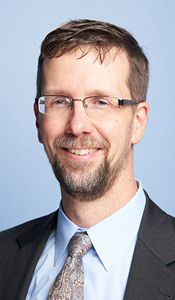Program Information
Safety Profile Assessment: A Tool for Improving Safety and Quality in Radiotherapy
P Dunscombe1, D Brown2, A Greener3, M O'Neill4, S Sutlief5, M Woodward6, E Yorke7, E Ford8*, (1) Tom Baker Cancer Centre, Calgary, AB, (2) Tom Baker Cancer Centre, Calgary, Alberta, (3) VA Medical Center, East Orange, NJ, (4) Univ Rochester Medical Center, Rochester, New York, (5) VA Medical Center, Seattle, WA, (6) AAPM, COLLEGE PARK, MD, (7) Memorial Sloan-Kettering Cancer Center, New York, NY, (8) University of Washington, SEATTLE, WA
MO-D-105-1 Monday 2:00PM - 2:55PM Room: 105Purpose: To develop an on-line questionnaire-based tool for documenting, benchmarking and improving quality and safety in radiotherapy clinics.
Methods:The Safety Profile Assessment (SPA) Tool, a project of the AAPM Work Group on Prevention of Errors, was built principally on four foundations: validated survey tools from the Agency for Healthcare Research and Quality; a published review of safety recommendations in seven recent authoritative documents; an AAPM white paper on incident learning; and the requirements for accreditation of radiation oncology practices within the ACR/ASTRO system as of 2011. The authors performed several iterations of the SPA prototype before further refinement at a workshop with detailed input from representatives of ASTRO, AAMD, ASRT and SROA for content validity. SPA was subsequently released to 32 centers for pilot testing.
Results:SPA consists of 92 statements divided into four major sections: 1) Institutional Culture, 2) Quality Management, 3) Managing Change and Innovation and 4) Clinical Performance. The assessor identifies compliance with each statement on a five-point Likert scale and can also add free text. Output options are pie charts giving an overall visual impression of the safety profile of a radiotherapy department and bar graphs allowing benchmarking against all radiotherapy contributors to the SPA database. Additionally SPA supports a Quality/Safety Improvement Tracking Log and links to relevant literature. In pilot testing, SPA required on average 1.3 hours to complete. Pilot test participants ranked SPA highly for ease of use and utility for improving safety. Pilot participants further noted that completing the SPA as a group improves efficiency and completion and also facilitates interaction of clinical staff.
Conclusion:SPA distills advice and experience from a variety of authoritative sources into a convenient, logically configured, on-line resource, which has received overwhelmingly positive reviews during pilot testing. SPA is now being configured for on-line distribution through the AAPM website.
Funding Support, Disclosures, and Conflict of Interest: The project was funded by the AAPM through the budget allocated to the Working Group on the Prevention of Errors.
Contact Email:


